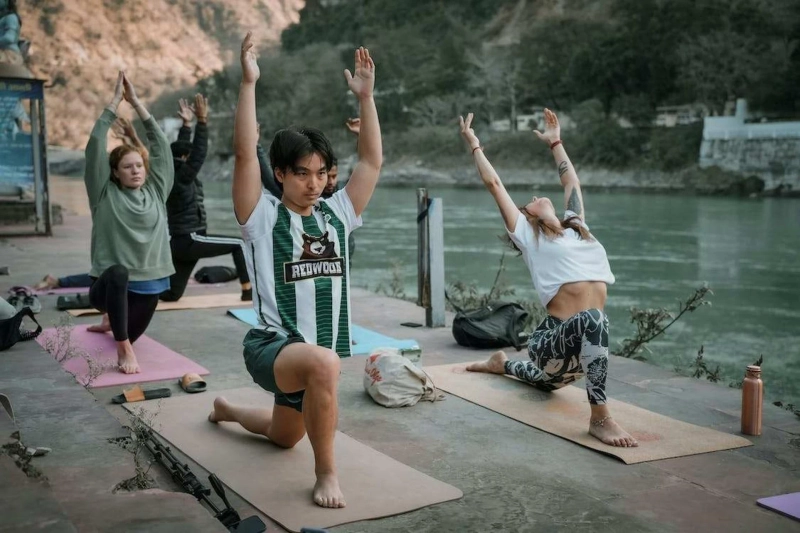Rishikesh is to yogis what Silicon Valley is to tech enthusiasts. It is the yoga capital of the world. The city is dotted with ashrams, temples, and meditation centers.
100 hours yoga course is a short-term teacher training program taught over the course of 100 hours. It includes a condensed curriculum that covers the foundational aspects of yoga philosophy, asana (physical postures), pranayama (breathing exercises), meditation, anatomy, teaching methodology, and more. It is a beginner-level course for yoga enthusiasts who want a solid foundation in yoga. While it may not meet the requirements for some yoga certification organizations, it can still be a valuable experience for those looking to deepen their practice or start their journey toward becoming a yoga teacher
100 Hours of Yoga TTC is suitable for:
Novice practitioners seeking a comprehensive and organized study of yogaIndividuals with a casual background in yoga, pursuing a more structured approachPeople who have an interest in establishing a strong foundation for a holistic understanding of yogaIndividuals with a desire for a concise course to harmonize the body and mind, and find life balanceRegistered RYTs looking to accumulate Continuing Education (CE) training hours
Here's what a typical 100-hour yoga training in Rishikesh might entail:
1. Yoga Asanas (Postures)
It often includes different variations of Surya Namaskar. You can also learn about different postures, their alignment, and techniques. This includes understanding the benefits, contraindications, and modifications for different poses.
2. Pranayama (Breathing Exercises)
Breath awareness and control are integral to yoga practice. You'll learn basic pranayama techniques and how to incorporate them into your practice and teaching.
3. Meditation
Introduction to meditation and relaxation techniques, including how to guide students through meditation sessions and savasana (final relaxation) in yoga classes.
4. Anatomy and Physiology
While not as in-depth as a longer training, you'll still cover basic anatomy related to yoga practice, including an overview of major muscle groups, joints, and how they relate to asanas.
5. Practical Teaching Experience
You'll likely have opportunities to practice teaching small segments of a class to your peers. Constructive feedback from both instructors and fellow participants can help you refine your teaching skills.
Please be aware that, depending on the yoga school or institute offering the program in Rishikesh, specific course information and curriculum may vary. It is a good idea to do your research and pick a reputable school that fits your yoga objectives and interests. Although, in order to become a certified yoga instructor, you must finish a 200-hour teacher training course.


